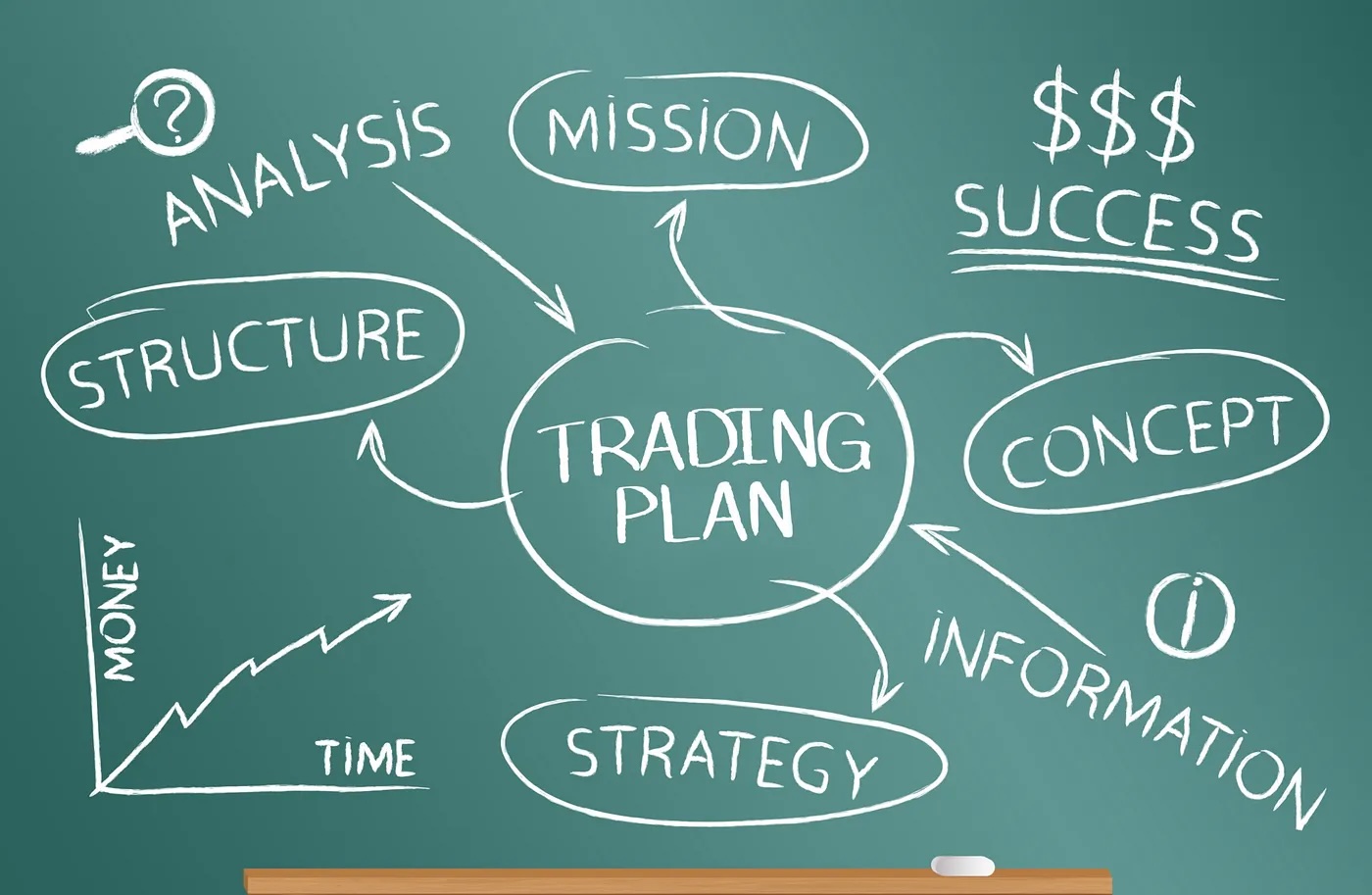No Plan, No Profits: How to Stop Winging It and Start Trading Smarter
Written by Arbitrage • 2025-07-31 00:00:00

If you've ever found yourself staring at the screen, refreshing your charts, hoping a trade will magically turn around, you're not alone. Most traders blow up their first account not because they're reckless, but because they don't have a plan. They're winging it. But the markets aren't a place for guesswork. They reward structure, discipline, and repeatability. If you want to start trading smarter - not just harder - it all starts with one thing: a trading plan.
Why Trading Without a Plan Is a Recipe for Disaster
When you trade without a plan, every decision is emotional. One day you're chasing a breakout. The next, you're panic selling a dip. Then you swear you'll "never do that again" - until you do. Here's what typically happens without a plan:
- You get stuck in revenge trades trying to make back losses
- You hesitate or FOMO because you have no system to trust
- You end up exhausted from decision fatigue
Imagine running a business with no budget, no goals, and no marketing strategy. That's what trading without a plan looks like - except you're playing with your own money.
What a Trading Plan Is (And What It's Not)
A trading plan is not a wishlist like "buy low, sell high." It is a written, repeatable set of rules that guide how, when, and what you trade. A good plan gives you structure. It tells you:
- What markets you trade (stocks? crypto? futures?)
- What setups you look for
- How you size your positions
- When to enter and when to get the hell out
Think of it like a flight checklist for a pilot. You don't want to be improvising at 35,000 feet - and you don't want to be guessing with five figures on the line.
The 6 Core Elements of a Good Trading Plan
Here's what every solid trading plan should include:
1. Your Trading Goals: Define what success looks like. Not just "get rich" - but measurable, realistic goals:
- Monthly or yearly return targets
- Maximum drawdown you'll tolerate
- Win rate and risk-reward expectations
2. Markets and Instruments: Choose your battlefield. Don't try to trade everything. Specialize.
- Which markets do you understand best?
- What timeframes suit your lifestyle?
- Are you focused on large-cap stocks, forex pairs, or something else?
3. Setup and Strategy: Define your edge. It could be technical (e.g., breakout strategy) or fundamental (e.g., earnings momentum).
- What criteria must be met before you enter a trade?
- Is it based on moving averages? Price action? Volume spikes?
4. Risk Management Rules: This is where most traders fail.
- How much do you risk per trade? (Most pros risk 1-2%)
- What's your max daily or weekly loss limit?
- What's your stop-loss and take-profit logic?
5. Entry & Exit Criteria: Be specific. "I'll know when I see it" doesn't work here.
- What triggers an entry?
- Do you scale in or enter all at once?
- When and how do you exit - profit target, trailing stop, technical signal?
6. Review & Journaling Process: This is your feedback loop.
- Keep a log of every trade: entry, exit, size, rationale, outcome
- Review regularly to spot what's working and what is not
- Make data-driven tweaks to your plan
Why Discipline > Brilliance
You don't need to be the smartest trader in the room. You just need to be the most consistent. Even a mediocre strategy can make money with strict execution. The best traders (whether it's Qullamaggie, Minervini, or Livermore back in the day) didn't win because they predicted everything. They won because they stuck to their edge without wavering. Your trading plan isn't a magic bullet. It's your anchor.
How to Build Your First Trading Plan (Without Getting Overwhelmed)
Start small. You don't need a 20-page PDF. Begin with one setup - something you've seen work. Build your rules around that:
- Pick your setup (e.g., high-volume breakout)
- Write down the conditions for entry and exit
- Define your stop-loss and position size
- Commit to journaling every trade
As you gain experience, you'll expand and refine your plan. Just remember: it is a living document, not a stone tablet.
Common Mistakes to Avoid
- Overcomplicating it: You don't need 10 indicators and 5 screens.
- Copy-pasting someone else's plan: It has to fit your personality and lifestyle.
- Tweaking constantly: Give your plan time to play out. Don't chase perfection.
- Ignoring risk: If you're not managing risk, you are not trading - you're gambling.
Tools to Help You Stick to Your Plan
- Journaling Tools: TraderSync, Edgewonk, Notion
- Alerts: Set TradingView alerts to avoid screen-watching
- Routines: Weekly or monthly trade reviews
- Accountability: Trading community or mentor check-ins
Final Thoughts
Winging it might work for a weekend poker game - but not for the markets. A trading plan won't guarantee profits, but it will give you clarity, structure, and a real chance to grow as a trader. Without it, you're just reacting; with it, you're executing. So stop winging it. Open a blank doc and start writing your plan today - even if it's just one setup. Your future trading self will thank you.